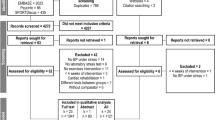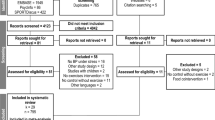Abstract
Cardiovascular reactivity is hypothesized to increase the risk of hypertension and other CVD-related conditions. However, studies to date are inconclusive. We compared the association of blood pressure and pulse responses to three stressors (postural challenge, handgrip test, mental arithmetic) with sociodemographic characteristics and CVD risk factors. We included 782 participants from the Hypertension Genetic Epidemiology Study. Blood pressure and pulse responses to stressors were defined as the difference between post- and pre-stress measurements. Stepwise regression analyses examined change in SBP and pulse in response to stressors as a function of sociodemographic and CVD risk factors. Age, race, and gender were forced into models and other variables (education, BMI, waist circumference, resting SBP and DBP, cigarette smoking, LDL and HDL cholesterol, glucose, and antihypertensive medications (beta-blockers, calcium channel blockers, diuretics, ace inhibitors)) were retained if P<0.10. Age was a significant predictor of SBP response to all stressors. The SBP response to a change in posture was not related to other variables. The SBP response to mental arithmetic was significantly higher among men, those with larger waists, higher SBP, beta-blocker users, and lower among smokers. SBP response to the handgrip was significantly higher among those with higher SBP and beta-blocker users. Similarly, the association of the pulse response to the risk factors varied considerably across the stressors. Overall, the socio-demographic and CVD risk factors accounted for between 9 and 14% of the variance in the SBP response to the stressors and from between 4 and 12% of the variance in the pulse response to the three stressors. The associations between sociodemographic and CVD risk factors and the SBP and pulse response to stress were modest and inconsistent across stressors. The findings suggest that cardiovascular reactivity is a concept that needs to be defined in reference to specific stressors so that mechanisms leading to responses can be better understood.
This is a preview of subscription content, access via your institution
Access options
Subscribe to this journal
Receive 12 digital issues and online access to articles
$119.00 per year
only $9.92 per issue
Buy this article
- Purchase on Springer Link
- Instant access to full article PDF
Prices may be subject to local taxes which are calculated during checkout

Similar content being viewed by others
References
Wood DL, Sheps SG, Elveback LR, Schirger A . Cold pressor test as a predictor of hypertension. Hypertension 1984; 6: 301–306.
Menkes MS et al. Cardiovascular reactivity to the cold pressor test as a predictor of hypertension. Hypertension 1989; 14: 524–530.
Carroll D et al. Blood pressure reactions to acute psychological stress and future blood pressure status: a 10-year follow-up of men in the Whitehall II study. Psychosom Med 2001; 63: 737–743.
Rose KM et al. The association between the blood pressure response to a change in posture and incident hypertension: prospective findings from the Atherosclerosis Risk in Communities (ARIC) Study. J Hum Hypertens 2002; 16: 771–777.
Light KC et al. High stress responsivity predicts later blood pressure only in combination with positive family history and high life stress. Hypertension 1999; 33: 1458–1464.
Eigenbrodt M et al. Orthostatic hypotension and incident stroke in the ARIC Study. Stroke 2000; 31: 2307–2313.
Rose KM et al. Orthostatic hypotension and the incidence of coronary heart disease in the Atherosclerosis Risk in Communities (ARIC) Study. Am J of Hypertens 2000; 13: 571–578.
Everson SA et al. Stress-induced blood pressure reactivity and incident stroke in middle-aged men. Stroke 2001; 32: 1263–1270.
Sparrow D, Tifft CP, Rosner B, Weiss S . Postural changes in diastolic blood pressure and the risk of myocardial infarction: the Normative Aging Study. Circulation 1984; 70: 533–537.
Vogele C . Serum lipid concentrations, hostility, and cardiovascular reactions to mental stress. Int J Psychophysiol 1998; 28: 167–179.
Bardwell WA, Ziegler MG, Dimsdale JE . Influence of cholesterol and fasting insulin levels on blood pressure reactivity. Psychosom Med 2000; 62: 569–575.
Moan A et al. Mental stress increases glucose uptake during hyperinsulinemia: associations with sympathetic and cardiovascular responsiveness. Metabolism 1995; 44: 1303–1307.
Kamarck TW et al. Exaggerated blood pressure responses during mental stress are associated with enhanced carotid atherosclerosis in middle-aged Finnish men: findings from the Kuopio Ischemic Heart Disesae Study. Circulation 1997; 96: 3842–3848.
Pickering TG, Gerin W . Area review: blood pressure reactivity; cardiovascular reactivity in the laboratory and the role of behavioral factors in hypertension: a critical review. Ann Behav Med 1990; 12: 3–16.
Williams RR et al. NHLBI Family Blood Pressure Program: methodology and recruitment in the HyperGEN Network. Ann Epidemiol 2000; 10: 389–400.
Friedewald WT, Levy RI, Fredrickson DS . Estimation of the concentration of low-density lipoprotein cholesterol in plasma, without use of the preparative ultracentrifuge. Clin Chem 1972; 18: 499–502.
David JA, Naito NK . Separation of lipoprotein (Lp) fraction by the Beckman TL-100 table-top ultracentrifuge (UC). Clin Chem 1986; 32: 1094.
Warnick GR, Benderson J, Albers JJ . Dextran sulfate-Mg2+ precipitation procedure for quantitation of high-density-lipoprotein cholesterol. Clin Chem 1982; 28: 1379–1388.
Fredrikson M, Dimberg U, Frisk-Holmberg M, Strom G . Arterial blood pressure and general sympathetic activation in essential hypertension during stimulation. Acta Med Scand 1985; 217: 309–317.
Bairy Merz CN et al. Cardiovascular stress response and coronary artery disease: evidence of an adverse postmenopausal effect in women. Am Heart J 1998; 135: 881–887.
Saab PG, Matthews KA, Stoney CM, Mc Donald R . Premenopausal and postmenopausal women differ in their cardiovascular and neuroendocrine responses to behavioral stressors. Psychophysiology 1989; 26: 270–280.
Nardo CJ et al. Descriptive epidemiology of blood pressure response to change in body position: the ARIC Study. Hypertension 1999; 33: 1123–1129.
Alli C et al. Prevalence and variability of orthostatic hypotension in the elderly: results of the Italian study on blood pressure in the elderly (SPAA). Eur Heart J 1992; 13: 178–182.
Masaki K et al. Orthostatic hypotension predicts mortality in elderly men: the Honolulu Heart Program. Circulation 1998; 98: 2290–2295.
Al'Absi M et al. Cardiovascular and neuroendocrine adjustment to public speaking and mental arithmetic stressors. Psychophysiology 1997; 34: 266–275.
Yoshiuchi K et al. Hemodynamic and endocrine responsiveness to mental arithmetic task and mirror drawing test in patients with essential hypertension. Am J Hypertens 1997; 10: 243–249.
Uchino BN, Uno D, Holt-Lundstad J, Flinders JB . Age-related differences in cardiovascular reactivity during acute psychological stress sin men and women. J Gerontol B Psychol Sci Soc Sci 1999; 54: 339–346.
Mukai S, Lipsitz LA . Orthostatic hypotension. Clin Geriatr Med 2002; 18: 253–268.
Jones PP et al. Gender does not influence sympathetic neural reactivity to stress in healthy humans. Am J Physiol 1996; 270 (1 Part 2): H350–H357.
Stone SV, Demborski TM, Costa PT, Mac Dougall JM . Gender differences in cardiovascular reactivity. J Behav Med 1990; 13: 137–156.
Carroll D et al. The relationship between socioeconomic status, hostility, and blood pressure reactions to mental stress in men: data from the Whitehall II study. Health Psychol 1997; 16: 131–136.
Pankow J et al. Linkage analysis of the blood pressure and pulse response to a postural change in the HyperGEN Study. Hypertension 2000; 36: 471–476.
Tabara Y, Kohara K, Miki T . Polymorphisms of genes encoding components of the sympathetic nervous system but not the rennin–angiotensin system as risk factors for orthostatic hypotension. J Hypertens 2002; 20: 651–656.
Hunt SC et al. Genetic heritability and common environmental components of resting and stressed blood pressures, lipids, and body mass index in Utah pedigrees and twins. Am J Epidemiol 1989; 129: 625–638.
Turner JR et al. Temporal and inter-task consistency of heart rate reactivity during active psychological challenge: a twin study. Physiol Behav 1986; 38: 641–644.
Acknowledgements
Network Center/Univ of Utah Field Center:Steven C. Hunt, Roger R. Williams (deceased), Hilary Coon, Paul N. Hopkins, Janet Hood, Lily Wu, Jan Skuppin.Univ. of Alabama at Birmingham Field Center:Albert Oberman, Cora E. Lewis, Michael T. Weaver, Phillip Johnson, Susan Walker, Christie Oden.Boston University/Framingham Field Center:R. Curtis Ellison, Richard H. Myers, Yuqing Zhang, Luc Djoussé, Jemma B. Wilk, Greta Lee Splansky.University of Minnesota Field Center:Donna Arnett, Aaron R. Folsom, Mike Miller, Jim Pankow, Gregory Feitl, Barb Lux.University of North Carolina Field Center:Gerardo Heiss, Barry I. Freedman, Kari North, Kathryn Rose, Amy Haire.Data Coordinating Center, Washington Univ.:D.C. Rao, Michael A. Province, Ingrid B. Borecki, Avril Adelman, Derek Morgan, Karen Schwander, David Lehner, Aldi Kraja, Stephen Mandel.Central Biochemistry Lab, Univ. of Minnesota:John H. Eckfeldt, Catherine Leiendecker-Foster, Ronald C. McGlennen, Greg Rynders, Michael Y. Tsai, Jean Bucksa.Molecular Genetics Laboratory, Univ. of Utah:Mark Leppert, Steven C. Hunt, Jean-Marc Lalouel, Robert Weiss.National Heart, Lung, & Blood Institute:Susan E. Old, Millicent Higgins (retired), Cashell Jaquish, Martha Lundberg, Mariana Gerschenson.
This hypertension network is funded by cooperative agreements (U10) with NHLBI: HL54471, HL54472, HL-54473, HL54495, HL54496, HL54497, HL54509, HL54515. We thank Brigitt Heier and Marilyn Knowles for their assistance in the preparation of this manuscript.
Author information
Authors and Affiliations
Corresponding author
Rights and permissions
About this article
Cite this article
Rose, K., North, K., Arnett, D. et al. Blood pressure and pulse responses to three stressors: associations with sociodemographic characteristics and cardiovascular risk factors. J Hum Hypertens 18, 333–341 (2004). https://doi.org/10.1038/sj.jhh.1001677
Received:
Revised:
Accepted:
Published:
Issue Date:
DOI: https://doi.org/10.1038/sj.jhh.1001677
Keywords
This article is cited by
-
Decreased pituitary response to insulin-induced hypoglycaemia in young lean male patients with essential hypertension
Journal of Human Hypertension (2006)
-
Quantitative genetic analysis of blood pressure reactivity to orthostatic tilt using principal components analysis
Journal of Human Hypertension (2006)



